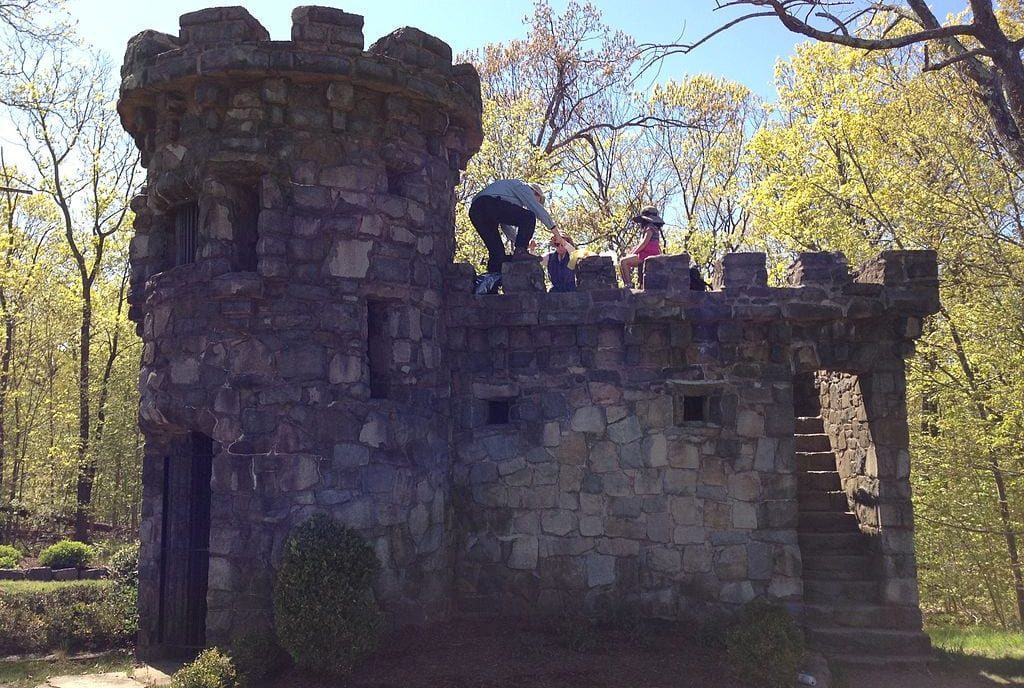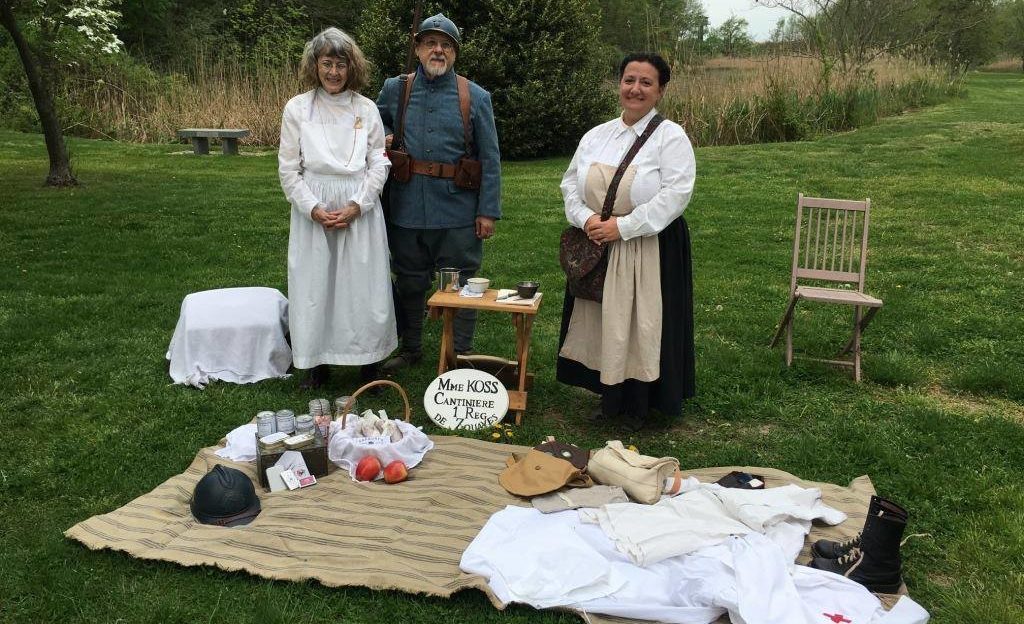The latest update for The Best Historical Hiking Trails in New Jersey is written by Lindsay Podolak.
No matter the season, New Jersey has a lot to offer its residents in terms of outdoor adventures. From gorgeous hiking trails to the remnants of old villages and battlefields, there’s no end to the exploring you can do with a few free hours. Add a bit of history to your next hike along one of NJ’s many historical hiking trails.
But if you’re looking to knock two activities off your list in one day, we’ve got the perfect pairing of history and hiking. Check out our picks for the top historical hiking trails in the Garden State.
Quick Click Guide: Select an NJ Region below to find a Historical Hiking Trail near you.
| North Jersey | Central Jersey | Jersey Shore | South Jersey |
More from Best of NJ
North Jersey
Jockey Hollow at Morristown National Historical Park
Location: Morris County
Trail: Yellow Trail or Blue Trail
History: Hikers looking for a moderate trail with interesting ties to the Revolutionary War should head to Jockey Hollow, located in Morristown National Historical Park. From December 1779 through June 1780, George Washington and the Continental Army camped out here, surviving what would be the coldest winter on record. As a bonus, the Wick Farm and Garden — which was built around 1750 and later served as a headquarters for generals during the war — is also located in the park.
What you’ll see: Though there are quite a few trail options, we recommend the Yellow and Blue trails. The Blue Trail is a 3-mile moderate course that gives hikers a look at the vantage point the Continental soldiers had and why this spot was chosen. The Blue Trail also travels past the Stark’s Brigade Monument, which marks the brigade’s encampment site. The Yellow Trail also offers a moderate hike, clocking in at 2.5 miles, and takes hikers by the recreated soldiers’ huts and cemetery.
Why I like it: Leashed pets are allowed on the trails, so feel free to bring your favorite furry friend along.
More info: Visit the website or you can give them a call.
Palisades Interstate Park
Location: Bergen County
Trail: Closter Dock Trail to Shore Trail to Huyler’s Landing to Long Path
History: This region of land saw a lot of action during the Revolutionary War, as it is conveniently located on the Hudson River. British troops used Huyler’s Landing to mount their attack on, and capture, Fort Lee, which ultimately led to Washington’s “Retreat to Victory,” and the Kearney House is thought to have been British General Cornwallis’ home for just one night during the war.
What You’ll See: This combination of trails takes hikers through an old stone tunnel, past ruins and the historic Kearney House, along many gorgeous viewpoints. In total, the trails amount to a 5.5-mile moderate hike, better known as the Alpine to Huyler’s Landing hike.
Why I like it: Take a tour of the Kearney House, originally known as “Mrs. Kearney’s Tavern,” or attend one of the park’s guided hikes where you’ll get a history lesson and a workout in one!
More info: Visit the website or you can give them a call.
Central Jersey

Washington Crossing State Park
Location: Mercer and Hunterdon Counties
Trail: Continental Lane Trail
History: This park marks the location of Washington’s Delaware River crossing in December 1776, followed by the army’s march to Trenton. On the morning of December 26, a surprise attack from Washington and his troops on the Hessian army led to a victory at the Battle of Trenton.
What you’ll see: Check out the area where Washington crossed the Delaware River and take a hike along the path that led the general and his troops toward Trenton in the wee hours of December 26, 1776 along the 1.6-mile Continental Lane trail. Though there aren’t many markers on this trail, there is plenty of room to imagine what it may have been like for the soldiers trudging through the area hundreds of years ago.
Why I like it: Planning your visit for the winter months? Bring along your snowshoes and explore the trails in a new way.
More info: Visit the website or you can give them a call.
Watchung Reservation
Location: Union County
Trail: Watchung Reservation History Trail
History: The Lenape Indians made their home in the reservation, as evidenced by remnants of campsites found along the rivers. There is also an abandoned copper mine from the 1600s and a sawmill that was built in the 1700s. Perhaps the most intriguing piece of history is what was once the small village of Feltville, but is now known as the Deserted Village. The small grouping of houses and buildings dates back to the 18th century and is the source of many local ghost stories.
What you’ll see: The six-mile History Trail takes you past historical spots like the Drake Farm site, Masker’s Barn, the old copper mine, and more. Also, portions of the shorter Orange and Blue Trails follow the Mo-No-Pe-Nonck Trail used by the Lenni Lenape Indians to travel from the Watchung Mountains to the shore.
Why I like it: The History Trail starts and ends at Trailside Nature & Science Center, a center with a gift shop, guided tours, and family programs to check out.
More info: Visit the website.
Jersey Shore
Batsto Lake Trail at Wharton State Forest
Location: Atlantic County
Trail: Tom’s Pond Trail
History: Through the 18th and 19th centuries, Batsto Village produced iron and glass. Their industries were so successful that the village came about to house workers; this then led to the construction of the sawmill, gristmill, general store and more. Many of the buildings in Batsto are still standing, offering a glimpse of what life was like in the community.
What You’ll See: Tom’s Pond Trail is an easy 1.8-mile hike that allows for a walk through Batsto Village; in fact, you can plan a hike that either starts or ends in the village. In truth, this adds about a mile of walking to your hike, but it’s absolutely worth it.
Why I like it: Tom’s Pond Trail is a “lollipop trail,” meaning it is a circular loop. In other words, it starts where it finishes. Because it’s short and easy, this is a great one for you to bring the kids along.
More info: Visit the website or you can give them a call.
Double Trouble State Park
Location: Ocean County
Trail: Sweetwater Trail
History: From the 1700s to the 1900s, Double Trouble Village was home to a thriving lumber and cranberry operation. A village in isolation, Double Trouble was completely dependent on the success of its two industries; Unfortunately, this did not carry it into the 20th century. Visit Double Trouble for a look at what life was like on the edge of the Pine Barrens centuries ago.
What You’ll See: This easy, 2.5-mile loop passes along 20th century cranberry bogs as well as Double Trouble Village; the village boasts 14 original structures dating back to the late 19th century. As a side note, if you’re looking for more of a walk than a challenging hike, this is the place.
Why I like it: Double Trouble is relatively close to many Jersey Shore towns; in other words, it’s the perfect place to check out when you’re on vacation but it’s not beach weather.
More info: Click here to learn more or you can give them a call.
South Jersey
Fort Mott State Park
Location: Salem County
Trail: Walking Tour
History: The original plan was for Fort Mott to be part of a three-fort defense system (along with Fort Delaware and Fort DuPont) protecting the Delaware River in the post-Civil War years. In 1872 construction began for eleven gun emplacements with twenty guns and a mortar battery with six emplacements, but that came to a halt in 1876 when Fort Saulsbury became the river’s primary defensive fort.
What you’ll see: The short and easy Walking Tour hike takes you past the old gun emplacements and leads you to the Delaware River. Interpretive signs dot the landscape, giving you detailed descriptions of different parts of Fort Mott. Oh and the Delaware River shoreline offers lots of great spots for a picnic.
Why I like it: Fort Mott offers lots of living history events, so check the calendar if you want to experience life during past eras.
More info: Visit the website or you can give them a call.
Historic Smithville Park
Location: Burlington County
Trail: Red and Green Trails
History: What started as a small mill operation grew into a major industrial plant that employed hundreds from the 1860s through the 1920s. The town of Smithville is recognized as a model industrial town that was ahead of its time in areas like sustainability and workers’ rights.
What you’ll see: The 1.5 mile Red Trail leads you around Smith’s Woods and crosses over Smith Lake. The slightly shorter Green Trail, clocking in at 1.1 miles, takes you along the lake and its many fishing areas. You’ll also see the park’s new floating bridge that opened in 2019.
Why I like it: Check the calendar for special events like Overnight Camping with Rangers in March.
More info: Visit the website or you can give them a call.
Hero (Top) Feature Image: © Patrick Lombardi / Best of NJ
Additional Images (in order): ©
Famartin / Wikimedia Commons
Jen Johnson / Facebook
Batsto Citizens Committee/Historic Batsto Village / Facebook
Fort Mott State Park / Facebook















